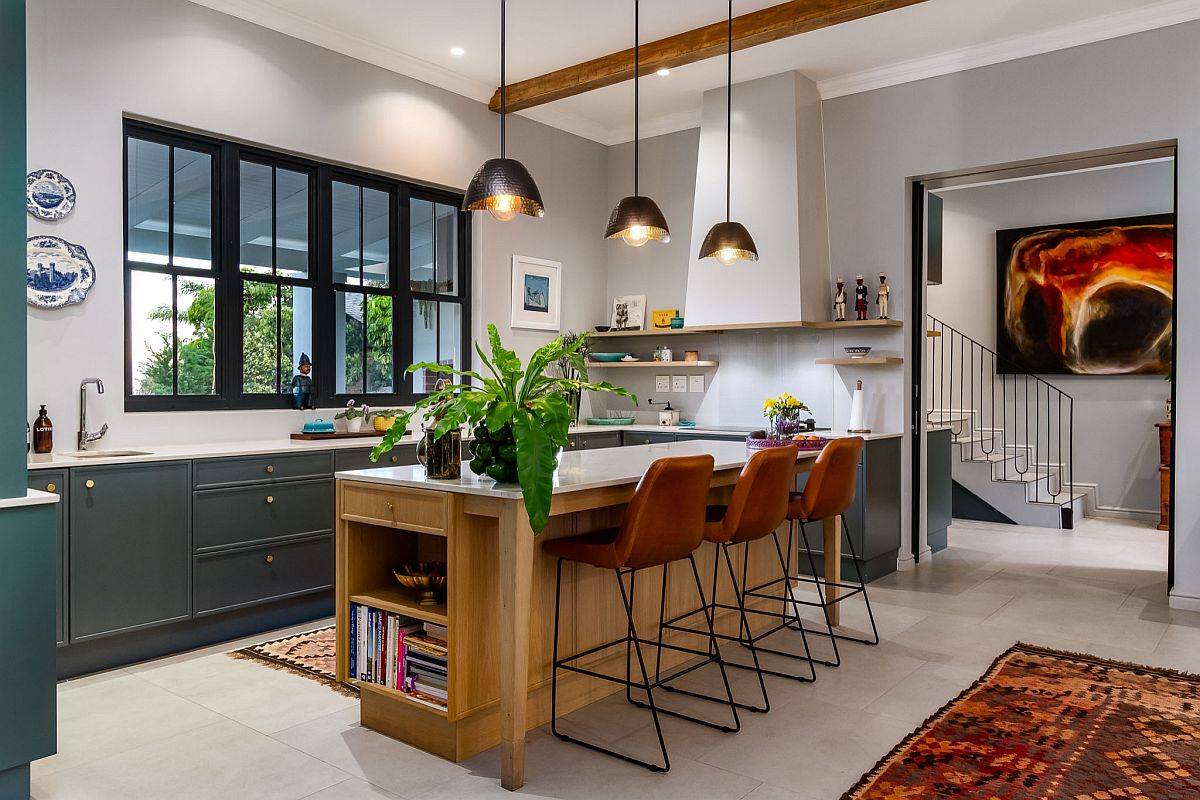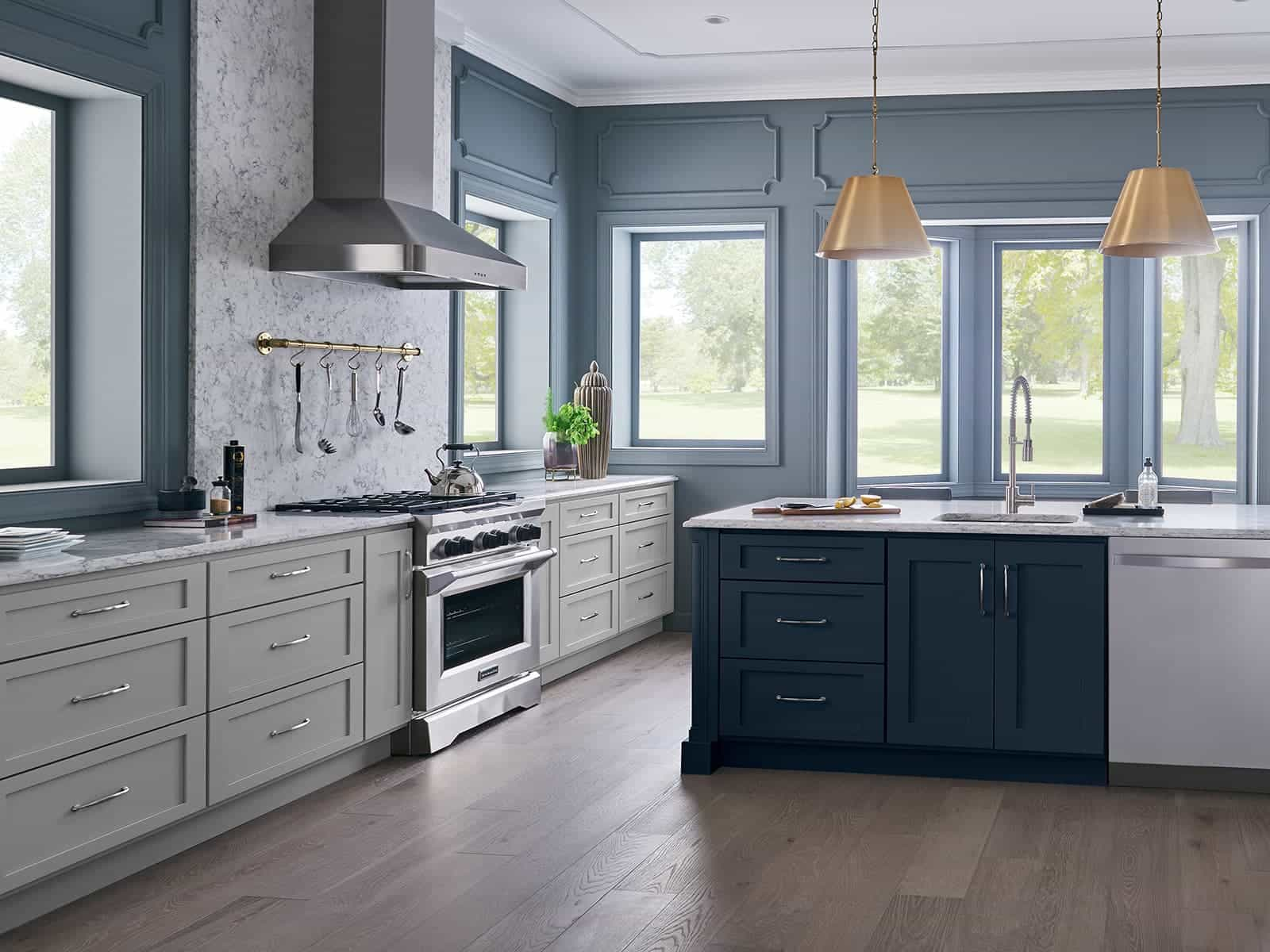Design Considerations for Kitchen Backsplashes Without Upper Cabinets: Kitchen Backsplash Without Upper Cabinets

Removing upper cabinets in a kitchen can be a bold move, but it opens up a world of design possibilities. The absence of these cabinets shifts the focus to the walls, making the backsplash a crucial element in defining the overall aesthetic.
Backsplash as a Focal Point
A backsplash without upper cabinets becomes a prominent feature, demanding careful consideration. It’s not just a functional element protecting the wall from splashes; it’s a design element that can elevate the entire kitchen’s visual appeal. The backsplash needs to be chosen wisely, considering its role as a focal point and its ability to complement the kitchen’s style.
Material Choices for Open Kitchens
- Tile: Tiles remain a popular choice for backsplashes due to their versatility, durability, and ease of cleaning. For open kitchens, consider large-format tiles, subway tiles, or patterned tiles to create a statement. A contemporary kitchen might feature sleek, minimalist tiles in neutral colors, while a farmhouse kitchen could embrace rustic subway tiles in warm tones.
- Natural Stone: Natural stone backsplashes exude elegance and sophistication. Marble, granite, and slate offer unique veining and textures, adding depth and character to the kitchen. However, natural stone can be more expensive and require more maintenance than other materials.
- Glass: Glass backsplashes are a great option for modern kitchens. They offer a clean, sleek look and can be customized with colors, patterns, or even embedded lighting. Glass is also easy to clean and resistant to stains.
- Metal: Metal backsplashes can add a touch of industrial chic to a kitchen. Stainless steel, copper, or brass are popular choices. Metal backsplashes are durable and easy to clean, but they can be more expensive than other options.
Illuminating the Backsplash
- Under-Cabinet Lighting: This classic approach provides practical illumination while showcasing the backsplash. LED strip lights are a modern and energy-efficient option.
- Pendant Lights: Pendant lights hung over the backsplash can add a touch of drama and style. Choose pendants that complement the backsplash’s material and style.
- Recessed Lighting: Recessed lights offer a clean and unobtrusive way to illuminate the backsplash. They can be positioned to create a warm and inviting atmosphere.
Color and Pattern for Depth and Dimension
- Color Palette: A neutral backsplash allows for flexibility in kitchen decor. Bold colors can create a dramatic statement. Consider using contrasting colors to create visual interest.
- Pattern Play: Patterned backsplashes can add texture and visual appeal. Geometric patterns, floral motifs, or abstract designs can all enhance the kitchen’s aesthetic.
- Vertical Emphasis: Vertical lines created by patterned backsplashes can make a small kitchen feel taller. This is especially effective in open kitchens where the absence of upper cabinets might make the space feel low.
Functional Advantages of a Kitchen Backsplash Without Upper Cabinets

A kitchen backsplash without upper cabinets offers a unique blend of style and functionality, creating a spacious and airy atmosphere while providing practical protection and design opportunities.
Increased Visual Openness and Spaciousness
The absence of upper cabinets allows for a greater sense of visual openness and spaciousness, making the kitchen feel larger and more inviting. The uninterrupted view of the walls and ceiling creates a sense of expansiveness, enhancing the overall aesthetic appeal of the space.
Protection Against Splashes and Spills
A backsplash serves as a crucial protective barrier against splashes and spills, preventing damage to walls and maintaining a clean and hygienic kitchen environment. It acts as a shield, deflecting splatters and spills, making cleaning and maintenance easier.
Storage Solutions Integrated into the Backsplash Design
The backsplash can be cleverly incorporated into the design of the kitchen, offering opportunities for integrated storage solutions.
- Open Shelving: Open shelving integrated into the backsplash provides a stylish and accessible storage solution, showcasing decorative items and frequently used kitchenware.
- Integrated Appliances: Appliances such as microwaves or ovens can be seamlessly integrated into the backsplash design, creating a sleek and streamlined look while maximizing space utilization.
Visual Divider Between the Kitchen and Other Areas of the Home, Kitchen backsplash without upper cabinets
A backsplash can serve as a visual divider, subtly separating the kitchen from other areas of the home, creating a distinct yet integrated space.
- Pros: A backsplash can enhance the visual appeal of the kitchen, creating a distinct and stylish focal point. It can also help to define the space, providing a sense of separation without completely isolating the kitchen.
- Cons: A backsplash can sometimes create a feeling of confinement or divide the space if not carefully designed. The choice of materials and color can impact the overall flow and aesthetic of the kitchen.
Improved Ventilation and Airflow
A well-designed backsplash can contribute to improved ventilation and airflow in the kitchen.
- Ventilation Features: The backsplash can incorporate ventilation features such as integrated fans or vents, ensuring efficient removal of cooking odors and steam.
- Open Design: An open backsplash design with minimal obstructions can facilitate better air circulation, preventing the build-up of moisture and odors.
Styling Options for Kitchen Backsplashes Without Upper Cabinets

Now that we’ve covered the practical aspects of having a kitchen backsplash without upper cabinets, let’s dive into the fun part: styling! Since you’ve got a lot of wall space to play with, you can really let your creativity shine.
Materials and Their Pros and Cons
Choosing the right materials for your backsplash is key to achieving the look you want. Here’s a breakdown of some popular options and their advantages and disadvantages:
- Tile: Tile is a classic choice for kitchen backsplashes. It comes in a wide variety of colors, patterns, and sizes, so you can easily find something to match your style. Tile is also durable, easy to clean, and can withstand heat and moisture.
- Pros: Durable, easy to clean, versatile, wide range of styles and colors.
- Cons: Can be expensive, installation can be time-consuming, grout lines require maintenance.
- Natural Stone: Natural stone like granite, marble, or slate adds a touch of elegance and sophistication to any kitchen. It’s also very durable and heat-resistant.
- Pros: Unique and elegant, durable, heat-resistant.
- Cons: Can be expensive, requires sealing, prone to staining.
- Glass: Glass backsplashes are becoming increasingly popular because they’re easy to clean and can create a sleek, modern look. They also come in a variety of colors and finishes.
- Pros: Easy to clean, modern look, available in a variety of colors and finishes.
- Cons: Can be fragile, can show fingerprints and smudges.
- Metal: Metal backsplashes are a great way to add a touch of industrial chic to your kitchen. They’re also very durable and easy to clean.
- Pros: Durable, easy to clean, industrial chic look.
- Cons: Can be expensive, may require special care to prevent scratches and dents.
- Acrylic: Acrylic backsplashes are a budget-friendly option that offers a sleek and modern look. They’re also easy to clean and resist stains.
- Pros: Budget-friendly, easy to clean, sleek and modern look.
- Cons: Can be easily scratched, may not be as durable as other materials.
Mix and Match Materials and Textures
Don’t be afraid to get creative with your backsplash! Mixing and matching different materials and textures can add visual interest and personality to your kitchen. For example, you could use a combination of tile and natural stone, or glass and metal. Think about incorporating different shapes, sizes, and colors to create a unique and eye-catching look.
Incorporate Artwork, Patterns, and Decorative Elements
A backsplash without upper cabinets is a blank canvas for your creativity. You can incorporate artwork, patterns, or decorative elements to make a statement.
- Artwork: A large-scale mural or a series of smaller framed prints can be a focal point in your kitchen. Think about using a theme that reflects your personal style or the overall design of your kitchen.
- Patterns: Geometric patterns, floral designs, or abstract art can add visual interest and personality to your backsplash. Consider using a bold color or a subtle pattern to create a desired effect.
- Decorative Elements: You can incorporate decorative elements like tiles with unique shapes, sizes, or textures. You can also use decorative trim pieces to create borders or accents.
Contrasting Colors and Textures
Using contrasting colors and textures can create a visually striking backsplash. For example, you could use a dark-colored tile with a light-colored grout, or a smooth glass backsplash with a textured metal trim. The key is to create a balance between the different elements so that the backsplash is visually appealing and not overwhelming.
Selecting the Right Backsplash Style
The style of your backsplash should complement the overall design of your kitchen.
- Modern Kitchen: A modern kitchen calls for a sleek and minimalist backsplash. Consider using glass, metal, or acrylic in a solid color or with a simple geometric pattern.
- Traditional Kitchen: A traditional kitchen can benefit from a more ornate backsplash. Tile with intricate patterns, natural stone, or decorative trim pieces can add a touch of elegance and sophistication.
- Rustic Kitchen: A rustic kitchen can be enhanced with a backsplash that has a natural, earthy feel. Consider using natural stone, reclaimed wood, or tile with a distressed finish.
- Transitional Kitchen: A transitional kitchen blends modern and traditional elements. You can create a backsplash that reflects this style by using a combination of materials, such as tile and glass, or natural stone and metal.
A kitchen backsplash without upper cabinets can create a sense of spaciousness and openness, but it also presents a unique challenge. Without the upper cabinets to act as a barrier, cabinet doors can swing freely, potentially colliding with walls or other objects.
To prevent this, consider using a kitchen cabinet door restraint , a simple yet effective device that keeps doors safely within their designated space. This ensures a clutter-free and functional open kitchen design, allowing you to showcase your beautiful backsplash without any unwanted surprises.
A kitchen backsplash without upper cabinets can create a sense of openness and airiness, drawing the eye to the countertop and showcasing the space below. However, without the traditional upper cabinets, storage solutions become crucial. This is where the ingenuity of hooks for painting cabinet doors comes into play.
By strategically placing these hooks on the back of the lower cabinets, you can maximize vertical space and keep frequently used items within easy reach, all while maintaining the sleek, uncluttered aesthetic of a kitchen without upper cabinets.
